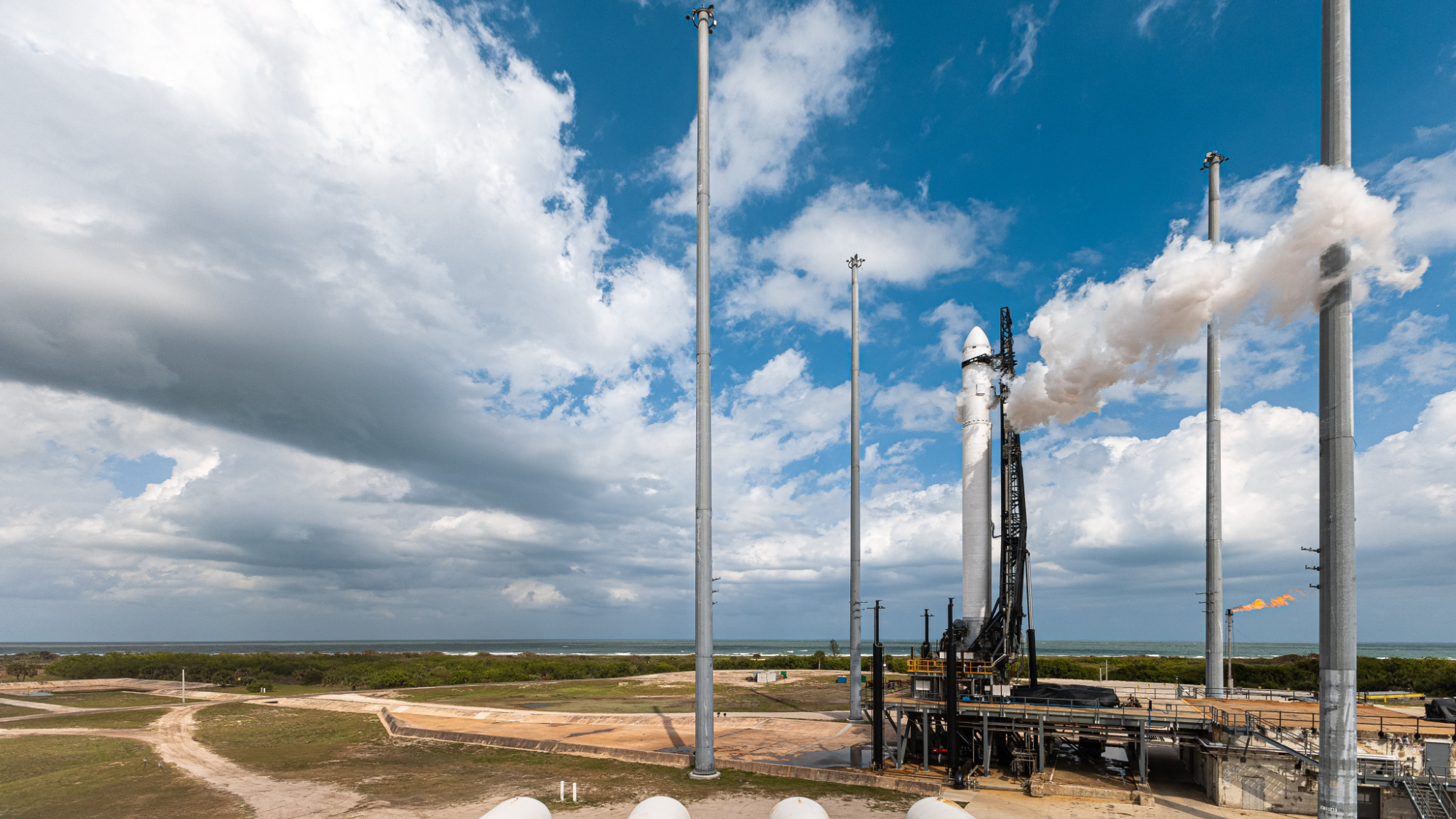Relativity Space aborts launch of Terran 1, the world's first 3D-printed rocket, twice in 1 day
Two launch countdown aborts, a wayward boat and high winds delayed the Terran 1 rocket launch.
An attempt by startup Relativity Space to launch the world's first 3D-printed rocket on Saturday (March 11) was cut short by two different aborts amid weather and range safety delays.
The 3d-printed rocket, called Terran 1, was scheduled to launch on a debut flight from Launch Complex 16 at Cape Canaveral Space Force Station in Florida during a three-hour window on Saturday afternoon. Despite three attempts, the company was unable to launch the rocket after suffering two last-minute aborts, including on that fired up its engines, and one hold when boat encroached in the offshore safety zone.
"Our teams obviously gave it an amazing shot today and we had high hopes for sending our Terran 1 off, but we're going to continue to take a measured approach so we can ultimately see this rocket off to max Q and beyond," Arwa Tizani Kelly, test and launch technical program manager for Relativity Space, said during live launch commentary, echoing comments she made after the company's first launch attempt on March 8, which also ended in a scrub.
The Terran 1 mission, called "Good Luck, Have Fun," is not carrying a payload. It is only carrying an old 3d-printed component from a failed print test by Relativity Space as a memento for the company.
Related: Relativity Space to launch satellite 'tugs' on 3D-printed rocket
Relativity Space's attempts to launch Terran 1, a 110-foot-tall (33-meter) rocket designed to launch small satellites into low-Earth orbit, began Saturday at 1 p.m. EST (1800 GMT), but was delayed for more than an hour due to unacceptable high upper level winds. An attempt to launch Terran 1 at 2:35 p.m. EST (1935 GMT) was thwarted 70 seconds before liftoff by a boat that apparently drifted inside the keep-out zone of the launch safety range.
The company then attempted to launch Terran 1 at 2:42 p.m. EST (1942 GMT), but saw an automatic abort at less than half a second before liftoff. The rocket's nine Aeon 1 engines fired up briefly then shut down due to a "launch commit criteria violation," according to launch director Clay Walker. The company later said an issue with the rocket's stage separation automation led to the abort.
Breaking space news, the latest updates on rocket launches, skywatching events and more!
A third attempt to launch the rocket on Saturday came at 4 p.m. EST (2100 GMT), the end of the window, when another abort occurred 45 seconds before liftoff. That abort was caused by a fuel pressure issue on the second stage, which was 1 pound-per-square-inch (PSI) too low, the company said via Twitter.
Video: Relativity Space CEO Tim Ellis on 3d-printed rockets and the future
"We've had to abort the internal count," Walker said in Relativity Space's launch webcast. "We are likely scrubbed for the day. Safing up the vehicle, thanks for playing."
Relativity Space's Terran 1 rocket is a prototype for a larger, fully reusable launch vehicle called Terran R and is the first booster built primarily through 3d-printing manufacturing. About 85% of the rocket is 3D-printed at the California-based company's Long Beach factory, with only components like rubber gaskets, computer chips and valves as its non-3d-printed parts, Kelly said.
Terran 1 uses liquid methane and liquid oxygen (or methalox) as fuel, make it the first U.S. orbital rocket aiming to reach orbit on such a mix, and is designed to carry payloads of up to 2,700 pounds (1,250 kilograms) to low Earth orbit for $12 million per flight. If Terran 1 succeeds, Relativity Space will use its 3d-printing techniques to build out the larger Terran R, which is expected to be able to lift payloads of up to 44,000 pounds (22,000 kg) to orbit.
Tim Ellis, Relativity Space CEO and co-founder, has said that if Terran 1 makes it off the launch pad and through the phase of maximum dynamic pressure during flight, he'd be happy. The main goal, he's stressed repeatedly, is to show that Relativity Space's 3d-printing processes are viable to build rockets quickly and affordably.
"This launch won't singularly define our long-term success," Ellis wrote on Twitter ahead of this week's launch attempts. "This launch will, however, provide us with useful data and insights that will make us better prepared for our next at-bat, and is a fantastic learning platform for developing technologies directly applicable to Terran R, giving us a lot of confidence we are ahead in the race to become the next great launch company."
Email Tariq Malik at tmalik@space.com or follow him @tariqjmalik. Follow us @Spacedotcom, Facebook and Instagram.

Tariq is the award-winning Editor-in-Chief of Space.com and joined the team in 2001. He covers human spaceflight, as well as skywatching and entertainment. He became Space.com's Editor-in-Chief in 2019. Before joining Space.com, Tariq was a staff reporter for The Los Angeles Times covering education and city beats in La Habra, Fullerton and Huntington Beach. He's a recipient of the 2022 Harry Kolcum Award for excellence in space reporting and the 2025 Space Pioneer Award from the National Space Society. He is an Eagle Scout and Space Camp alum with journalism degrees from the USC and NYU. You can find Tariq at Space.com and as the co-host to the This Week In Space podcast on the TWiT network. To see his latest project, you can follow Tariq on Twitter @tariqjmalik.

